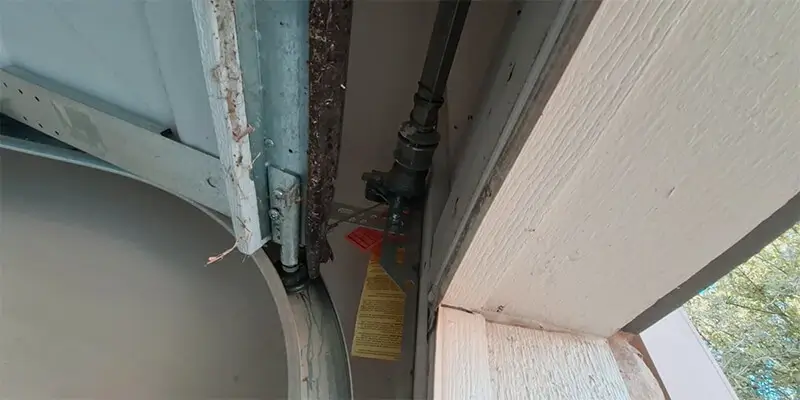A functional garage door relies on several key components, one of which is the garage door rail. The garage door rail is crucial for the smooth operation of your garage door, guiding it as it opens and closes. This article will delve into the intricacies of garage door rails, covering their installation, maintenance, and common issues. With the right knowledge, you can ensure your garage door operates efficiently and safely.
What is a Garage Door Rail?
The garage door rail, also known as the track, is the pathway along which the garage door moves. It is a critical component that ensures the door opens and closes smoothly. Garage door rails are typically made of metal and are designed to be durable and long-lasting.
Types of Garage Door Rails
1. Vertical Tracks
Vertical tracks are mounted on either side of the garage door opening. They guide the door as it moves up and down, ensuring it stays aligned with the doorway.
2. Horizontal Tracks
Horizontal tracks extend from the top of the vertical tracks to the back of the garage. These tracks help support the door when it is in the open position.
3. Curved Tracks
Curved tracks connect the vertical and horizontal tracks, allowing the door to transition smoothly from vertical to horizontal movement.
Importance of Garage Door Rails
Garage door rails play a crucial role in the overall operation of the garage door. They ensure the door moves smoothly and stays aligned, preventing potential malfunctions and enhancing safety. Properly maintained rails can also extend the lifespan of your garage door system.
Installing Garage Door Rails
Step-by-Step Installation Guide
- Gather Necessary Tools and Materials: Before starting, ensure you have all the necessary tools and materials, including rails, brackets, screws, and a level.
- Attach Vertical Tracks: Secure the vertical tracks to the garage door frame using brackets and screws. Ensure they are perfectly aligned.
- Install Horizontal Tracks: Attach the horizontal tracks to the ceiling of the garage. Use a level to ensure they are straight.
- Connect Curved Tracks: Connect the curved tracks between the vertical and horizontal tracks, ensuring a smooth transition.
- Secure All Connections: Tighten all screws and brackets, ensuring all connections are secure and stable.
Table: Common Issues and Solutions for Garage Door Rails
| Issue | Cause | Solution |
| Misaligned Tracks | Loose screws or brackets | Tighten screws and realign tracks |
| Noisy Operation | Lack of lubrication | Apply lubricant to the tracks |
| Sticking Door | Dirt or debris in the tracks | Clean the tracks thoroughly |
| Rusted Tracks | Exposure to moisture | Clean rust and apply rust-resistant paint |
| Worn Out Tracks | Prolonged use | Replace the damaged tracks |
Maintaining Your Garage Door Rails
Regularly inspect, clean, and lubricate your garage door rails to ensure smooth operation. Proper maintenance prevents misalignment, reduces noise, and extends the lifespan of your garage door system.
Regular Inspection
Regularly inspect your garage door rails for signs of wear and tear. Look for loose screws, misalignment, and any visible damage. Addressing these issues early can prevent more significant problems down the line.
Lubrication
Lubricate the garage door rails periodically to ensure smooth operation. Use a silicone-based lubricant for the best results. Avoid using grease as it can attract dirt and debris.
Cleaning
Keep the tracks clean to prevent dirt and debris from causing the door to stick. Use a damp cloth to wipe down the tracks and remove any buildup.
Professional Maintenance
Schedule annual maintenance with a professional to ensure all components of your garage door system, including the rails, are in good condition. A professional can identify and address issues that may not be immediately apparent.
Common Problems with Garage Door Rails and How to Fix Them
Common problems with garage door rails include misalignment, noise, and rust. Fix these issues by realigning tracks, lubricating, and cleaning or replacing damaged sections to ensure smooth and efficient operation.
Misaligned Tracks
Misaligned tracks can cause the garage door to operate unevenly or not at all. To fix this, loosen the screws holding the tracks, realign them using a level, and tighten the screws.
Noisy Operation
A noisy garage door can be a sign that the tracks need lubrication. Apply a silicone-based lubricant to the tracks and rollers to reduce noise.
Sticking Door
A garage door that sticks or doesn’t move smoothly may have dirt or debris in the tracks. Clean the tracks thoroughly to remove any obstructions.
Rusted Tracks
Rusted tracks can compromise the structural integrity of your garage door system. Remove rust using a wire brush and apply a rust-resistant paint to protect the tracks.
Worn-Out Tracks
Over time, garage door rails can wear out due to constant use. If the tracks are damaged or worn out, they should be replaced to ensure the door operates correctly.
FAQs about Garage Door Rails
1. How often should I lubricate my garage door rails?
Lubricate your garage door rails every six months to ensure smooth operation. Use a silicone-based lubricant for the best results, and avoid using grease as it can attract dirt and debris.
2. What should I do if my garage door rails are misaligned?
If your garage door rails are misaligned, loosen the screws holding the tracks, realign them using a level, and then tighten the screws. If the problem persists, it may be best to contact a professional.
3. How can I prevent rust on my garage door rails?
To prevent rust, keep your garage door rails clean and dry. Apply a rust-resistant paint or coating to the tracks, especially if your garage is in a humid environment.
4. Why is my garage door making a loud noise when operating?
A loud noise during operation is often due to a lack of lubrication. Apply a silicone-based lubricant to the tracks and rollers to reduce noise and ensure smooth movement.
5. Can I install garage door rails myself?
Yes, you can install garage door rails yourself if you have the necessary tools and follow the correct steps. However, if you’re unsure or uncomfortable with the installation process, it’s best to hire a professional.
6. What causes a garage door to stick while opening or closing?
A sticking garage door is usually caused by dirt or debris in the tracks. Cleaning the tracks thoroughly can often resolve the issue. Lubrication may also help if the problem persists.
7. How do I know if my garage door rails need to be replaced?
If your garage door rails are severely bent, rusted, or worn out, they need to be replaced. Regular inspections can help you identify these issues early and prevent further damage to your garage door system.
Conclusion
Garage door rails are a vital component of your garage door system, ensuring smooth and reliable operation. By understanding how to install, maintain, and troubleshoot these rails, you can keep your garage door functioning optimally. Regular maintenance, including lubrication and cleaning, will prolong the life of your garage door rails and prevent common issues.





